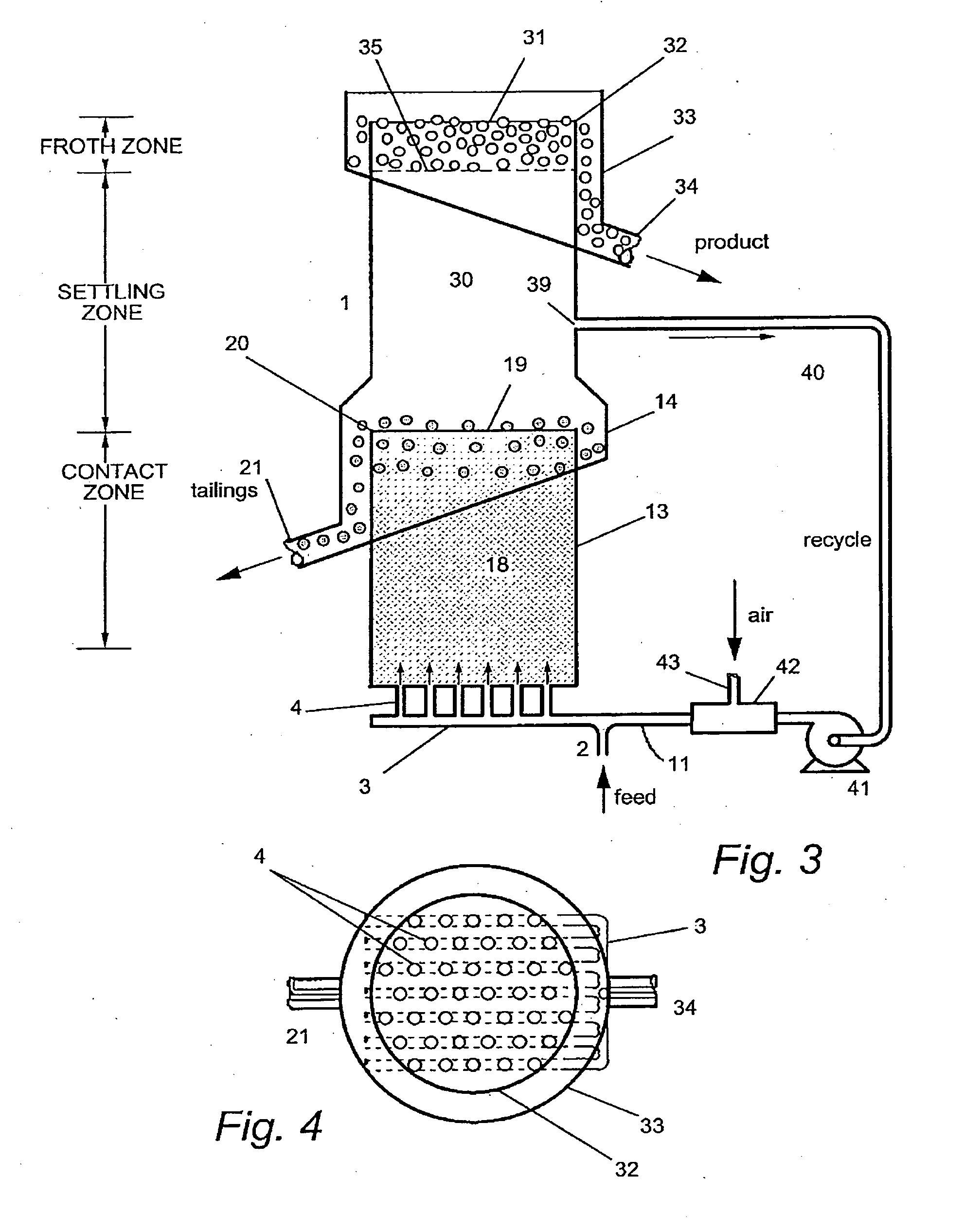Method and apparatus for flotation in a fluidized bed
a technology of fluidized bed and flotation method, which is applied in the direction of flotation, solid separation, etc., can solve the problems of high energy-dissipation rate, difficult flotation of coarse particles, and severe limitations of existing technologies in regard to their ability to recover coarse particles
- Summary
- Abstract
- Description
- Claims
- Application Information
AI Technical Summary
Problems solved by technology
Method used
Image
Examples
Embodiment Construction
[0048]FIGS. 1 and 2 show a cross-sectional elevation and a plan view respectively, of a first preferred embodiment according to the invention. The liquid feed containing the particles to be separated by flotation is prepared and conditioned with appropriate collector and frother reagents prior to entry to the vessel or column 1. For convenience it will be assumed that the vessel is a column with rotational symmetry about the vertical axis. The base of the column is a vertical cylindrical section 13, at the top of which an internal launder 14 is located. The feed to the column enters at the inlet 2, where it mixes with a supply of recycle liquid entering from a duct 11. The two streams combine and enter a distribution system 3 that feeds a multiplicity of entry pipes 4 into the base of the flotation cell. The total water flowrate is such that the superficial water velocity in the cell exceeds the minimum value required for fluidization. Air is introduced into the cell through a duct ...
PUM
 Login to View More
Login to View More Abstract
Description
Claims
Application Information
 Login to View More
Login to View More - R&D
- Intellectual Property
- Life Sciences
- Materials
- Tech Scout
- Unparalleled Data Quality
- Higher Quality Content
- 60% Fewer Hallucinations
Browse by: Latest US Patents, China's latest patents, Technical Efficacy Thesaurus, Application Domain, Technology Topic, Popular Technical Reports.
© 2025 PatSnap. All rights reserved.Legal|Privacy policy|Modern Slavery Act Transparency Statement|Sitemap|About US| Contact US: help@patsnap.com



